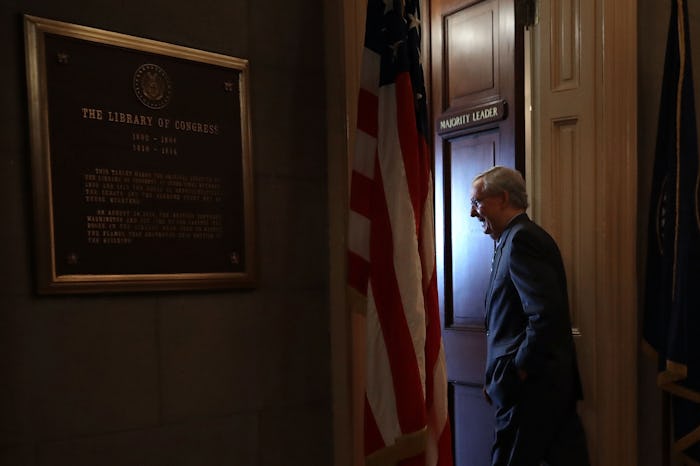Life

This Is How Many Kids Could Be Uninsured Under The BCRA
A week after the Senate released a draft of its long-awaited Better Care Replacement Act, the Congressional Budget Office has finally released its report on the bill in response. The report estimates that around 22 million more Americans would be left without health insurance by 2026. With such alarming numbers, how many kids could be uninsured under the BCRA?
One of the chief intentions of the BCRA seems to be persuading younger, healthier, Americans to remain insured. Resounding cries from the public have voiced concerns about how the bill would impact senior citizens, hitting them with higher coverage rates and loss of protection in nursing homes. But there is little information available about how the Senate's proposal would impact the children of America.
What we do know is that the BCRA would impose serious cuts to funding for Medicaid, as well as lasting changes to the program's structure. If the bill passes, these changes could have a devastating impact on the many children reliant on the program. In fact, Medicaid is the single largest provider of health insurance to American children. According to data gathered by the American Academy of Pediatrics, Medicaid provides coverage for over 30 million children across the country. Additionally, children account for 43 percent of all Medicaid enrollees.
Sasha Pudelski, a member of AASA, a group representing school superintendents, along with the National Alliance for Medicaid in Education's John Hill, and the National Association of School Psychologists' Kelly Vaillancourt Strobach, explained in a statement how school children would be impacted by a per-capita plan such as the BCRA:
A per-capita cap, even one that is based on different groups of beneficiaries, will disproportionally harm children’s access to care, including services received at school. Schools are often the hub of the community, and converting Medicaid’s financing structure to per-capita caps threatens to significantly reduce access to comprehensive health care for children with disabilities and those living in poverty.
The AASA spoke out against the AHCA in that same statement, praising Medicaid and calling for its protection:
Medicaid is a cost-effective and efficient provider of essential health care services for children. School-based Medicaid programs serve as a lifeline to children who often can’t access critical health care and health services outside of their schools. Under this bill, the bulk of the mandated costs of providing health care coverage would be shifted to the states even though health needs and costs of care for children will remain the same or increase.
The BCRA would limit future funding to Medicaid even more than the AHCA, increasing the risk of loss of coverage for these children. Opponents to the BCRA claim that it is sacrificing the wellbeing of lower income Americans to provide tax cuts to the wealthy. While an exact number of children who could lose coverage has not been released, it is clear that millions of children nationwide are dependent on the services that the BCRA looks to cut.
Reduced or lost coverage would be devastating to our nation's most vulnerable populations: the elderly, the impoverished, and the children. Factors such as these are heavy on the minds of those opposed as the Senate moves toward a vote on the bill in the coming weeks.